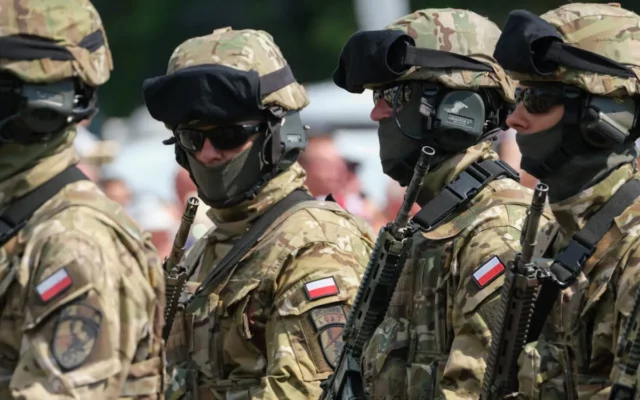The Ukraine war has become a game of resources. Both the Russians and the West (the US and NATO) are throwing in vast amounts of munitions, armor, aircraft and manpower. Both sides are concerned about the galloping consumption of assets. Each would like to shock the other into quitting. Both are saber rattling. But only one appears to be saber rattling with nuclear weapons – risking an escalation that would devastate Europe.
Russia is under severe US and EU sanctions. Its huge weapons inventory, much of it left over from Soviet days when the USSR poured most of its wealth into armaments, is being consumed rapidly. A lot of nearly antique weapons are being brought to the Ukraine battlefield. At the same time, some of Russia’s more modern weapons have proven to be inadequate for the task.
The Russians, therefore, have changed the game.
President Vladimir Putin’s announcement that he would deploy nuclear-tipped Iskander missiles from Belarus skips over the current, not-so-great inventory and goes right to the possibility of Armageddon. Iskander is a short-range ballistic missile that can cover key parts of Poland and Ukraine, for example, Warsaw and Kiev. The Russians say this deployment does not contravene any nuclear arms limitations agreements, but Russia formally pulled out of the relevant Intermediate-Range Nuclear Weapons (INF) agreement in 2019, followed later by the US.
The Russians claim the decision to send nuclear missiles – under Russian control – to Belarus is a response to the British decision to send Challenger 2 main battle tanks to Ukraine armed with anti-tank depleted uranium ammunition (DU). This is in no way analogous – and won’t be even if DU missiles are on US Abrams tanks, which will appear in Ukraine in a few months.
Fear of NATO
The real reason, beyond the depletion of Russian weapons, is the possibility of NATO sending forces into Ukraine. Poland is already planning on doubling the size of its army. The Polish ambassador to France has said Poland “will be forced” to enter the Ukraine war if Ukraine’s army starts to falter.
To Putin, the buildup of Poland’s land forces means a NATO army is preparing for intervention, and means that NATO will commit other resources, especially airpower and even strategic bombers. In theory or in reality, NATO’s actions explain the Russian move.
The Russians have long contended that the US installation of anti-ballistic missile systems in Poland and Romania was not just for air defense. Putin and his generals have pointed out that the AEGIS Ashore ballistic missile defense system uses M-41 launchers that not only fire interceptor missiles but also can be used for launching BGM-109G Tomahawk cruise missiles.
American Tomahawk missiles have conventional warheads today, but originally, they were deployed with nuclear warheads designed to penetrate Soviet air defenses by flying low to the ground and avoiding search radars. The Tomahawk nuclear warhead, the W-80, could deliver a nuclear blast ranging in scale from 5 to 150 kilotons (KT). As a comparison, the Hiroshima atomic blast was between 13 and 18 KT. The warheads were retired between 2010 and 2018, although they are kept in active storage.
In 2014 the US Nuclear Weapons Council selected the W-80-1 thermonuclear warhead for a new US Air Force cruise missile, the Long Range Stand-Off (LRSO) missile, that is planned for deployment in 2027.
Russia’s Arsenal
Russia has a massive arsenal of so-called “tactical” nuclear weapons that can be launched from land, air and sea. While there is, as yet no sign of any Russian preparation to arm its weapons with nuclear warheads, the planned Iskander missile deployment to Belarus would definitely change the picture.
Russian leaders and commentators have been talking about using nuclear weapons, perhaps trying to prepare the Russian public for their possible use. Putin has also ordered a significant strengthening of layered air defenses around Moscow.
Ukraine is planning a major offensive in late spring or early summer, once all the tanks and aircraft and supplies arrive from the US and NATO. The US has proposed that the offensive aim at taking Crimea back from Russia.
A massive Ukrainian attack on Crimea could include some NATO forces. But even without physical intervention from outside, it will be a major challenge for the Russians to stop a focused Ukrainian all-out offensive. Such a development could lead to Russian use of tactical nuclear weapons, or at least threats to use them.
Ukraine is not worth a nuclear war. But if Russian gamesmanship gets out of control, either because of what Moscow fears the US will do – or because of what Ukrainian troops actually do – the result for Europe will be catastrophic. The war cries out for a settlement before the participants stumble into a nuclear conflict. And, as the nuclear powers, Russia and the US should openly work out nuclear arms agreements before that happens, and the agreements must include China.


